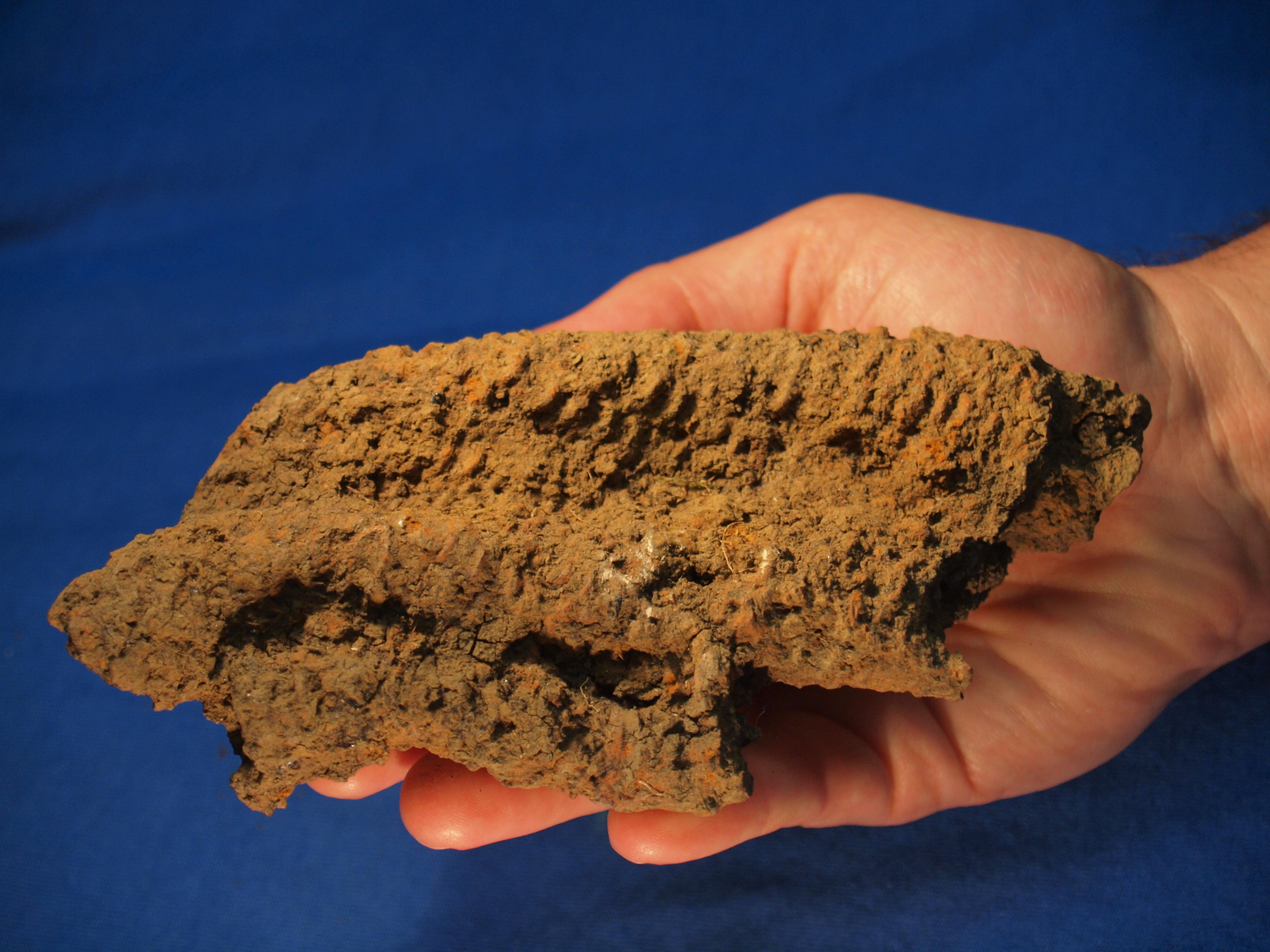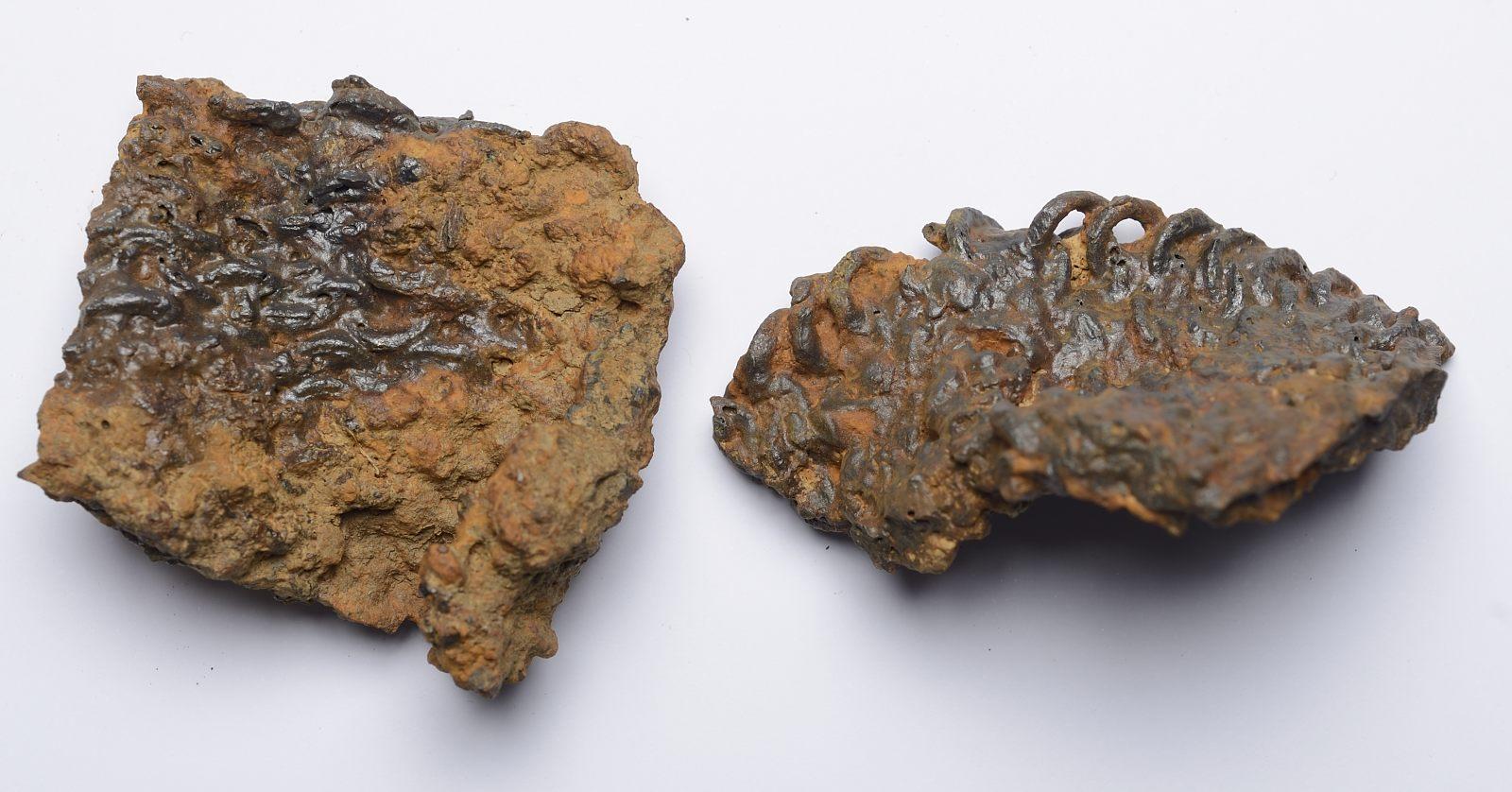Archaeologists from Freie Universität Berlin Excavated Well Preserved Roman Soldier’s Chain Mail
Another Sensational Discovery in the Exploration of the Roman-Germanic Battlefield at the Harzhorn, Germany, Third Century AD
№ 232/2013 from Aug 15, 2013
Archaeologists from Freie Universität Berlin made a spectacular discovery in their excavations of a Roman-Germanic battlefield at the Harzhorn in Lower Saxony. While exploring the area near Kalefeld in the Northeim district north of Göttingen, the researchers, headed by Prof. Dr. Michael Meyer, found the chain mail of a Roman soldier from the Third Century AD. It was the first time that such a well-preserved piece of body armor was excavated on a Roman-Germanic battlefield. This piece of equipment, worn on the body, made it possible to reconstruct an individual story in the battle, a close-up image of the war, said Michael Meyer, a professor of prehistoric archaeology at Freie Universität Berlin.
The chain mail, which was found in several fragments, consists of thousands of small chain links with a diameter of about six millimeters. The iron in the rings, however, is largely decomposed. Chain mail was worn in battle by Roman soldiers of various ranks. Germanic warriors usually waived this protection; however, in Germanic burial grounds, remains of those laboriously produced armor can often be found. In this case, not only the object itself was an unusual find, but also the position in which it was found. It was located directly on the edge of the battlefield with probably the most intense combat action that could be detected on the Harzhorn hill.
“This discovery represents something fundamentally new for the Battle at the Harzhorn,” said Michael Meyer. “This is the first time that an almost complete part of personal armor was found.” Meyer said it is possible that the chain mail was stripped from a wounded Roman soldier by his comrades because they wanted to dress his wounds and carry him away from the battle zone. It is conceivable that they left the chain mail behind. However, it is also conceivable that it was specifically laid down in a certain place by Germanic soldiers after the fighting was over, as an indication that this location played a special role in the fighting.
The excavations this year were done on the edges of the main battle zones. The archaeologists wanted to ascertain how far the battles extended and whether different fighting locations could be identified that belong together or whether they were all isolated clashes. This Roman-Germanic battlefield is one of the best preserved sites of the Roman-Germanic conflict. Its discovery in 2008 was a sensation because until then it had been assumed that after the Battle of the Teutoburg Forest (Varusschlacht in German) in 9 AD there was no further Roman military presence in Germania. The site of the battle in the 3rd century has been studied since 2008 Michael Meyer, the head of the excavation, and his team, in cooperation with the state Department of Archaeology in Lower Saxony (Niedersächsischer Denkmalpflege) and the archaeologists of the district of Northeim.
Plans are underway to exhibit the chain mail in the Lower Saxon state exhibition once the piece has been completely excavated and cleaned and restored, which is an elaborate process. The exhibition, entitled "Rome's Forgotten Campaign: The Battle of the Harzhorn," will open in the local State Museum in Braunschweig on September 1, 2013. The exhibition will display a comprehensive selection of the 2,700 objects found during five years of excavation. Numerous loans from ten European countries will also be on display, adding more context about the Roman-Germanic history of the crisis-ridden 3rd century.
Photos are available for representatives of the media at
www.fu-berlin.de/presse/informationen/fup/2013/fup_13_232/index.html
They may be used free of charge, provided the photographers are given due credit:
Clemens Fiedler and Detlef Bach, Winterbach.
Further Information
Dr. Nina Diezemann, Office of News and Public Affairs, Freie Universität Berlin, Tel. +49 30 838 73190, Email: nina.diezemann@fu-berlin.de or presse@fu-berlin.de


